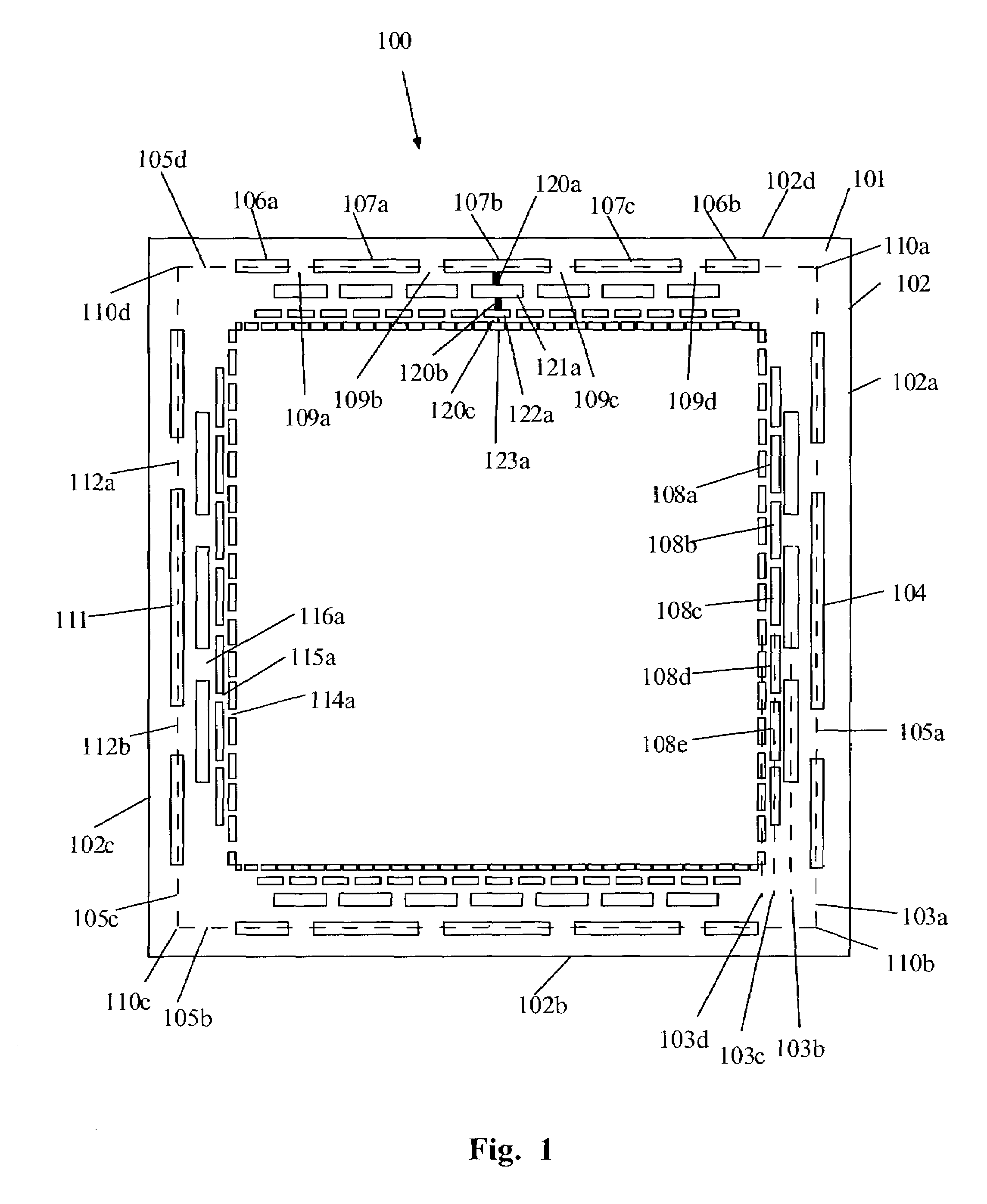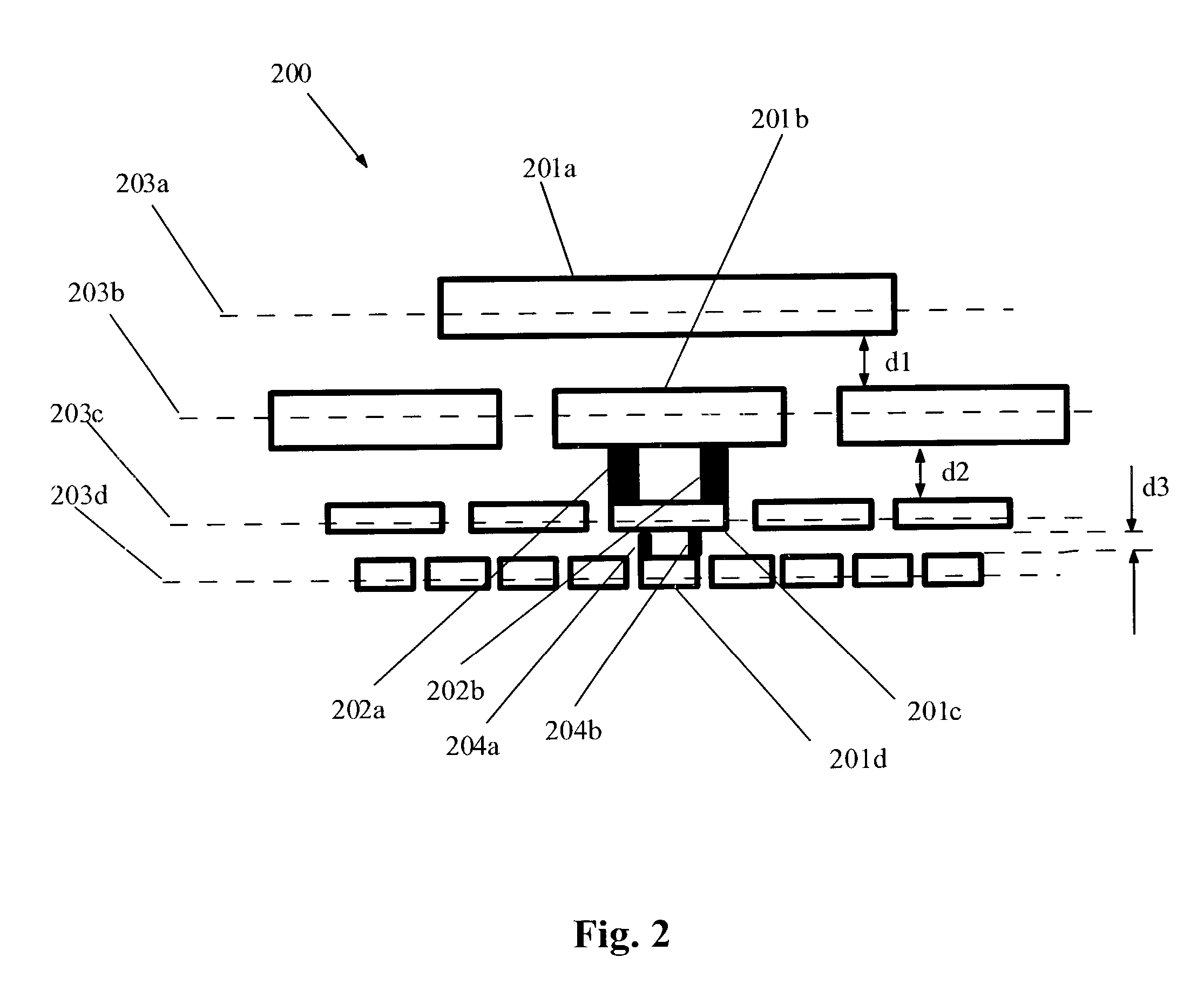Linearized conductive surface
a conductive surface, linear technology, applied in mechanical pattern conversion, instruments, computing, etc., can solve the problems of increasing the number of rows, increasing the touch panel border, and the inability of the electrode pattern to linearize the field
- Summary
- Abstract
- Description
- Claims
- Application Information
AI Technical Summary
Benefits of technology
Problems solved by technology
Method used
Image
Examples
example
[0077]The electrode pattern 1000 shown in FIG. 10 was numerically modeled using a finite element analysis. The electrode pattern was incorporated in a capacitive touch sensor. The transparent conductor had a perimeter of 27.94 cm (long edge) by 21.59 ch (short edge), and had a sheet resistance of 2500 ohms per square. The sheet resistance of all conductive segments, connecting bars, and contact pads was 0.01 ohms per square. In addition, The following numerical values were used in modeling electrode pattern 1000 of FIG. 10:
[0078]separation between perimeter 1200 and row 1610 was 0.076 cm;
[0079]width of conductive segments in row 1610 was 0.063 cm;
[0080]separation between rows 1610 and 1620 was 0.038 cm;
[0081]width of conductive segments in row 1620 was 0.051 cm;
[0082]separation between rows 1620 and 1630 was 0.038 cm;
[0083]width of conductive segments in row 1630 was 0.038 cm;
[0084]separation between rows 1630 and 1640 was 0.038 cm;
[0085]width of conductive segments in row 1640 was ...
PUM
 Login to View More
Login to View More Abstract
Description
Claims
Application Information
 Login to View More
Login to View More - R&D
- Intellectual Property
- Life Sciences
- Materials
- Tech Scout
- Unparalleled Data Quality
- Higher Quality Content
- 60% Fewer Hallucinations
Browse by: Latest US Patents, China's latest patents, Technical Efficacy Thesaurus, Application Domain, Technology Topic, Popular Technical Reports.
© 2025 PatSnap. All rights reserved.Legal|Privacy policy|Modern Slavery Act Transparency Statement|Sitemap|About US| Contact US: help@patsnap.com



